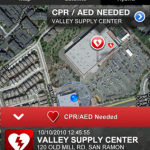Fever is a well recognized side effect of head injury. Management of fever is inconsistent among physicians taking care of these patients. There is a lot of debate on the best course of action, but not so much data. Current enthusiasm for applications of hypothermia has created some reluctance to tolerate much in the way of hyperthermia. Here is my take on the currently available literature.
First, understand that there is a fundamental difference between studies that study induced hyperthermia vs those that look at spontaneous fever. This lies in the fact that the set point for temperature regulation is changed in fever, but not in hyperthermia. Therefore, it is not clear whether hyperthermia studies can truly be used to answer these questions.
Animal studies originally focused on stroke models, which showed deleterious effects from hyperthermia. TBI is very different than stroke, but some hyperthermia models did tend to show cellular damage and blood brain barrier breakdown at temperatures of 39C. However, a fever model in rats showed no outcome difference (in rats) in febrile vs normothermic animals with TBI.
A Medline search (ref 4) yielded no randomized controlled trials that could be used to guide us with regard to fever management. The lesser quality papers involved a very heterogeneous group of subjects that made it difficult to draw good conclusions. As a generalization, they found that extremes of temperature, both high and low, were probably associated with worse outcomes. One randomized prospective study showed that aggressive fever control for temperatures > 38.5C had higher mortality and more infections.
A recent meta-analysis (ref 3) found that TBI patients with fever stayed in the hospital and ICU longer. This translated into an extra $14,000 per patient. Precise reasons for the longer stay cannot be accurately determined, but it might be expected that patients with fever would undergo time-consuming searches for possible infectious sources.
Finally, a very recent prospective study (ref 1) at a single institution that did not try to alter temperature found that the optimum survival occurred in a group of patients whose temperatures remained between 36.5 and 38C.
Bottom line: Literature support for aggressive management of fever is poor. If there were a clear correlation with temperature maintained at or slightly below normal, we’d probably have figured it by now. Fever up to 38 degrees C probably does not need to be treated in head injured patients. However, this does not eliminate the need to continue surveillance for infectious complications.
References:
- The effect of spontaneuous alterations in brain temperature on outcome: a prospective observational cohort study in patients with severe traumatic brain injury. J Neurotrauma 27(12):2157-2164, 2010.
- Induced normothermia attenuates intracranial hypertension and reduces fever burden after severe traumatic brain injury. Neurocrit Care 11(1):82-87, 2009.
- Brain injury and fever: hospital length of stay and cost outcomes. J Intensive Care Med 24(2):131-139, 2009.
- The significance of altered temperature after traumatic brain injury: an analysis of investigations in experimental and human studies: part 2. Br J Neurosurg 22(4):497-507, 2008.



